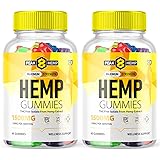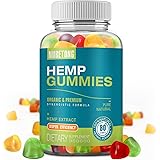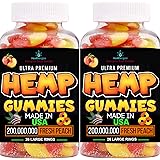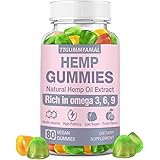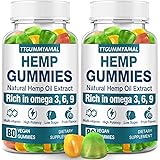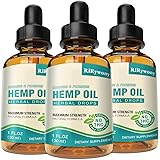Cardiovascular disease, often referred to as heart and artery disease or the clogging of arteries, consistently ranks as a leading health concern globally. Maintaining healthy blood flow to vital organs such as the heart and brain is paramount for overall well-being and longevity. While regular exercise and a balanced diet form the bedrock of preventative health strategies, as highlighted by Dr. Mandell in the accompanying video, specific nutritional components can offer profound benefits in enhancing arterial function and promoting optimal circulation.
One such crucial component is citrulline, an amino acid gaining significant attention for its remarkable ability to support cardiovascular health. This article delves deeper into the mechanism by which citrulline contributes to opening arteries and improving blood flow, offering an expanded perspective on the powerful role diet plays in maintaining a healthy circulatory system. Understanding these intricate biological pathways empowers individuals to make informed dietary choices that can significantly impact their long-term health.
Unlocking Arterial Health: The Nitric Oxide Pathway
At the heart of arterial health lies a tiny yet powerful molecule: nitric oxide (NO). This gas acts as a potent vasodilator, meaning it helps relax and widen blood vessels, allowing blood to flow more freely. The body naturally produces nitric oxide, and its production is critical for regulating blood pressure, ensuring oxygen and nutrient delivery to cells, and maintaining the integrity of the vascular system. When nitric oxide production is compromised, arteries can stiffen and constrict, leading to elevated blood pressure and reduced blood flow.
The remarkable journey of citrulline begins when it is consumed, as it is converted into another amino acid called arginine within the body. Subsequently, arginine serves as a direct precursor for nitric oxide synthesis. This elegant biological pathway—citrulline converting to arginine, which then generates nitric oxide—is a cornerstone of maintaining flexible and open arteries. Consequently, by enhancing this process, we can effectively support the circulatory system, ensuring adequate oxygenation and nutrient supply to every cell.
The Role of Vasodilation in Cardiovascular Wellness
Vasodilation, the process of blood vessels widening, is not merely about lowering blood pressure; it encompasses a broader spectrum of benefits for cardiovascular wellness. When arteries dilate, the resistance to blood flow decreases, which in turn reduces the workload on the heart. This allows the heart to pump blood more efficiently, mitigating strain over time. Furthermore, improved blood flow ensures that the brain receives a steady supply of oxygen and glucose, critical for cognitive function and overall mental acuity.
For various organs throughout the body, adequate circulation is indispensable for optimal function and cellular health. A robust nitric oxide pathway, therefore, contributes significantly to sustaining the health of endothelial cells—the cells lining the inside of blood vessels—which play a pivotal role in regulating vascular tone. Embracing foods rich in citrulline serves as a natural and effective strategy to bolster this crucial physiological process, fostering systemic health and vitality.
Dietary Strategies for Healthy Blood Flow: Citrulline-Rich Foods
Incorporating citrulline-rich foods into your daily diet is an accessible and delicious way to support your cardiovascular system. These foods not only provide essential nutrients but also contribute to the vital nitric oxide pathway discussed previously. Regularly consuming a variety of these natural sources can make a significant difference in maintaining healthy arteries and promoting optimal blood flow throughout the body.
Among the many beneficial foods, Dr. Mandell specifically highlights several common options. Watermelon stands out as an exceptionally potent source of citrulline, with surprisingly high concentrations found not just in the red flesh but also in its often-discarded rind. Other excellent dietary inclusions that deliver a good supply of citrulline include:
- Squash (e.g., butternut, acorn)
- Melon (e.g., cantaloupe, honeydew)
- Pumpkin
- Cucumber
Each of these options can be easily integrated into meals, offering flexibility and variety in your nutritional approach. For instance, adding watermelon rind to smoothies or pickling it are creative ways to maximize its benefits. Moreover, these fruits and vegetables are generally low in calories and rich in other vitamins, minerals, and antioxidants, further enhancing their value as part of a health-conscious diet.
Beyond Citrulline: A Holistic Approach to Arterial Wellness
While citrulline-rich foods offer a targeted approach to enhancing nitric oxide production and supporting arterial health, it is essential to consider them as part of a broader, holistic strategy for cardiovascular wellness. No single food or nutrient acts in isolation; rather, a symphony of dietary and lifestyle choices contributes to the overall health of your heart and circulatory system. Consequently, embracing a diverse, plant-forward diet is fundamental for comprehensive well-being.
To further support healthy blood flow and flexible arteries, consider incorporating a wide array of whole foods known for their cardiovascular benefits. Foods high in antioxidants, such as berries, leafy greens, and colorful vegetables, help protect arterial walls from oxidative damage. Furthermore, sources of omega-3 fatty acids, like fatty fish or flaxseeds, play a role in reducing inflammation and promoting a healthy lipid profile. Regular physical activity, stress management techniques, and adequate sleep are also indispensable components of a preventative health regimen that complements dietary interventions. Ultimately, focusing on these synergistic practices creates a powerful defense against cardiovascular disease and promotes a vibrant, healthy life with open arteries.


